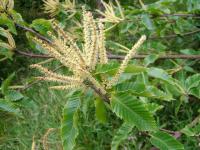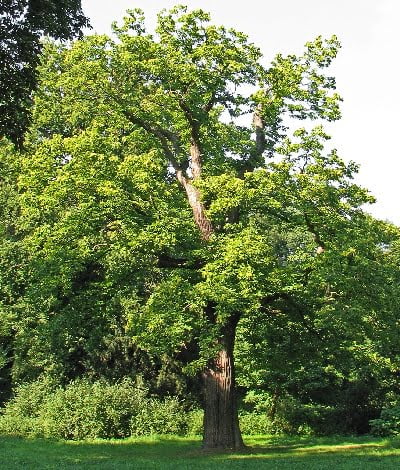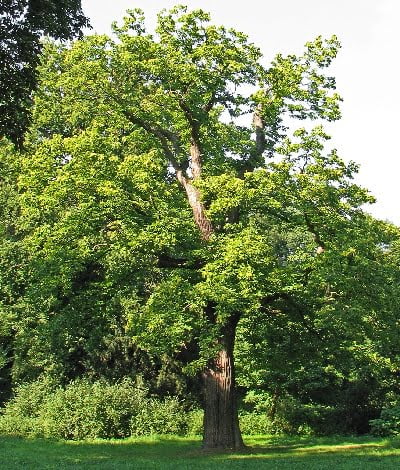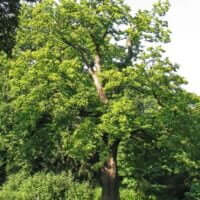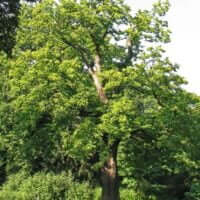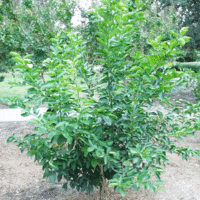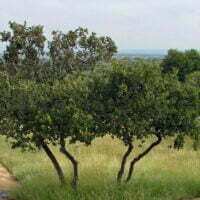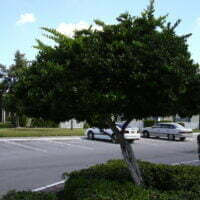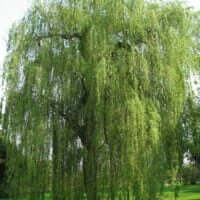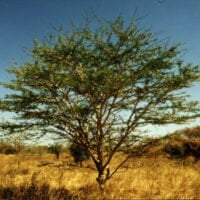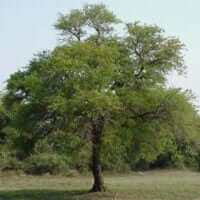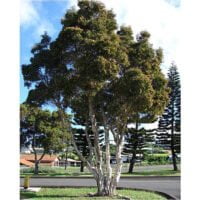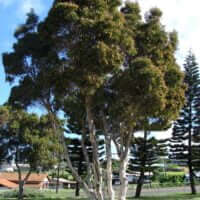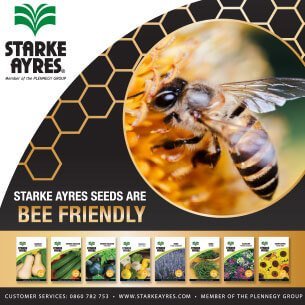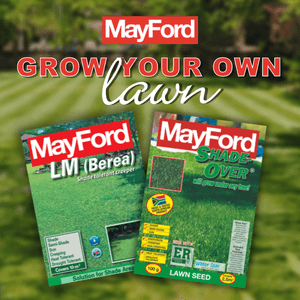| Botanical name | Castanea sativa |
|---|---|
| Plant Care |  Deciduous Deciduous – Sheds Its Leaves Annually  Full Sun Full Sun – Prefers 6 or more hours of sun per day.  Frost Sensitive Frost Sensitive – Will Get Damaged and Possibly Killed During Periods of Frost.  Low Watering Low Watering – Requires Little Water.  High Maintenance High Maintenance – Requires Regular Maintenance.  Non Indigenous Non Indigenous – Exotic to South Africa. |
| Size | |
| Categories | |
| Flowers | January February October November December Very showy in summer when it produces masses of upright, yellow catkins. |
| Common name(s) | Sweet Chestnut, Spanish chestnut |
| Origin | |
| Uses in landscape design | Long-living specimen shade tree that is deciduous and very showy in summer. |
| Fruit | Flowers are followed by spiny fruit, each having one to five edible nuts inside. |
| Other languages | Kastaiing (A) |
Castanea sativa (Sweet Chestnut, Spanish chestnut)
- Botanical name: Castanea sativa
- Common name(s): Sweet Chestnut, Spanish chestnut
- Categories: Trees
Plant description:
A fine, long-living specimen shade tree that is deciduous and very showy in summer when it produces masses of upright, yellow catkins. Flowers are followed by spiny fruit, each having one to five edible nuts inside.
Family: –
Synonym: –
Botanical Pronunciation: –
Castanea sativa requirements and features
info on these icons
Moderate Maintenance
Requires moderate maintenance.
Prohibited Use Notice: No Data Scraping Allowed Except for Search Engine Indexing:
The content provided on PlantInfo.co.za is intended for personal, non-commercial use only. Unauthorized extraction, reproduction, or use of the data, including scraping, for any purpose other than search engine indexing is strictly prohibited. Violations of these terms may result in legal action. By accessing and using this website, you agree to comply with these conditions and acknowledge the legal restrictions on the use of our content.
January February October November December
Very showy in summer when it produces masses of upright, yellow catkins.
